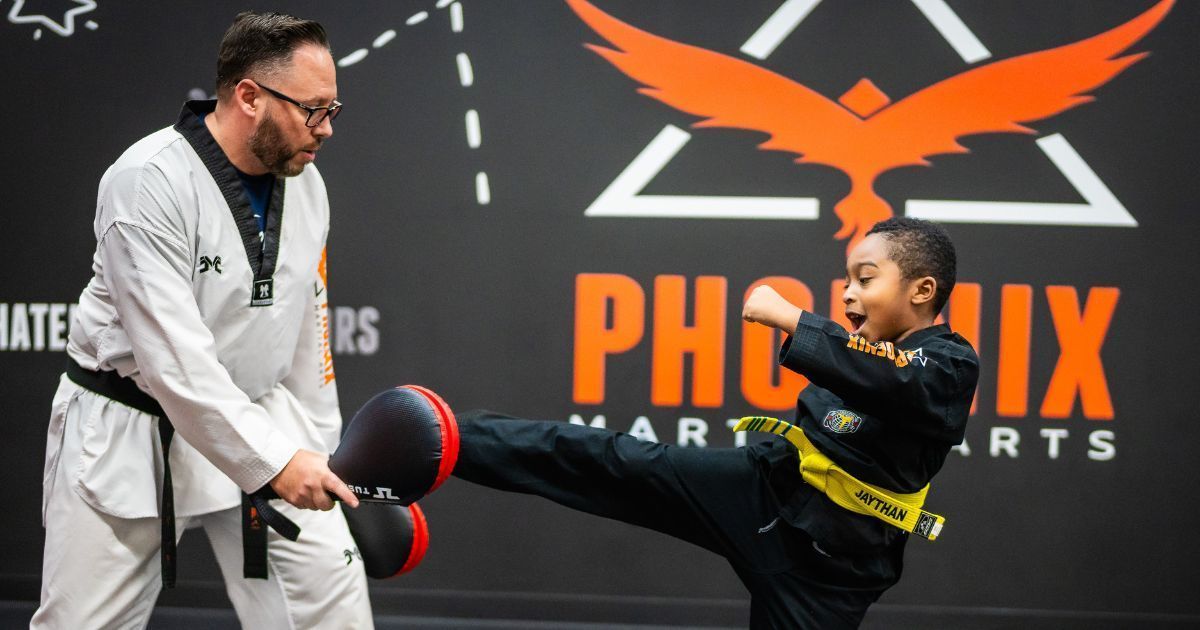Creativity and Innovation for Kids: How to Inspire Your Kids to Be Creative and Innovative Leaders
Do you want your kids to grow up to be successful, happy, and fulfilled?
Do you want them to make a positive impact in the world and lead others to greatness?
If you answered yes, then you need to help them develop two of the most essential skills for leaders in the 21st century: creativity and innovation.
Creativity and innovation are the abilities to generate new and valuable ideas, products, or solutions that solve problems and meet needs. They are the driving forces behind human progress and evolution. They are also the key differentiators that set apart the leaders from the followers, the winners from the losers, and the legends from the ordinary.
But how do you inspire your kids to be creative and innovative leaders? How do you nurture their natural talents and potentials, and help them unleash their inner genius? How do you equip them with the mindset, the tools, and the strategies to overcome challenges, seize opportunities, and create value for themselves and others?
That's what this article is all about. In this article, you'll learn how to inspire your kids to be creative and innovative leaders by applying four practical tips and strategies for creativity and innovation for kids. These tips are based on my own experience as a Parent, a Coach, a Speaker, as well as on the latest research and best practices in the fields of psychology, education, and leadership.
By applying these tips, you will not only help your kids develop their creativity and innovation, but also their confidence, resilience, and leadership skills. You will also strengthen your bond with them, and have fun along the way. Are you ready? Let's get started!
Tip #1: Creativity and Innovation for Kids - Encourage Curiosity and Exploration
The first tip to inspire your kids to be creative and innovative leaders is to encourage their curiosity and exploration, which are the foundations of creativity and innovation for kids. Curiosity and exploration are the fuel that ignites the spark of imagination and discovery. They are also the catalysts that foster a growth mindset, which is the belief that abilities can be developed through effort and learning.
Curiosity and exploration are natural instincts for kids. They are born with an innate desire to learn, to experiment, to question, and to understand. They are constantly seeking new information, experiences, and perspectives that expand their horizons and challenge their assumptions. They are not afraid to try new things, to make mistakes, and to learn from them.
As parents, we need to support and stimulate our kids' curiosity and exploration. We need to create a safe and supportive environment where they can freely express their interests, passions, and questions. We need to provide them with opportunities to learn new things, to explore new places, and to meet new people. We need to encourage them to ask open-ended questions, to seek answers, and to share their findings.
One of the ways I do this with my own son is by taking him with me to martial arts tournaments around the country. I expose him to different cultures, cuisines, and people. I show him the beauty and diversity of our country. One day, I hope to take him on trips around the world so he can see the challenges and opportunities that we face as a global community. I want to introduce him to inspiring people who are making a difference in their fields, such as entrepreneurs, scientists, artists, and activists.
By doing this, I help my son develop a sense of curiosity and exploration that fuels his creativity and innovation. I also help him develop a global mindset, which is the ability to appreciate and adapt to different perspectives and cultures. This is a crucial skill for leaders in the 21st century, as they need to collaborate and communicate with people from diverse backgrounds and contexts.
One of the most successful leaders who exemplifies curiosity and exploration is Elon Musk. Elon is the founder and CEO of Tesla, SpaceX, Neuralink, and The Boring Company. He is also the co-founder and former chairman of PayPal, SolarCity, and OpenAI. He is widely regarded as one of the most visionary and innovative entrepreneurs of our time, as he is constantly pushing the boundaries of science, technology, and business.
Elon's curiosity and exploration started at a young age, when he taught himself how to program computers and read voraciously about science fiction, physics, engineering, and philosophy. He later pursued his interests in renewable energy, space exploration, artificial intelligence, and biotechnology, and created companies that aim to solve some of the biggest problems facing humanity, such as climate change, interplanetary colonization, and brain-computer interface.
Elon's curiosity and exploration have enabled him to generate groundbreaking ideas, products, and solutions that have revolutionized multiple industries and sectors. He has also inspired millions of people around the world to pursue their dreams and passions, and to make a positive impact in the world.
Tip #2: Creativity and Innovation for Kids - Challenge Assumptions and Norms
The second tip to inspire your kids to be creative and innovative leaders is to challenge their assumptions and norms, which can stimulate creative and innovative thinking for kids. Assumptions and norms are the beliefs and expectations that we have about ourselves, others, and the world. They are often based on our past experiences, our social conditioning, and our cognitive biases. They can help us make sense of reality and guide our actions, but they can also limit our thinking and creativity.
Challenging assumptions and norms can help us break free from our mental boxes and see things from different angles. It can also help us develop critical thinking and problem-solving skills, as it can help us identify and overcome the gaps, flaws, and contradictions in our reasoning and arguments.
As parents, we need to challenge our kids' assumptions and norms, and help them do the same. We need to expose them to different ideas, opinions, and perspectives that challenge their existing views and beliefs. We need to encourage them to question the status quo, to think outside the box, and to experiment with different approaches and solutions. We need to teach them to be open-minded, flexible, and adaptable to change.
One of the ways I do this with my son Elijah is by playing devil's advocate with him. I often present him with scenarios or dilemmas that require him to think critically and creatively. I challenge him to justify his opinions and decisions, and to consider the pros and cons of different alternatives. I also introduce him to lateral thinking, which is a technique that involves using logic and imagination to generate novel and unexpected solutions.
By doing this, I help my son develop a habit of challenging assumptions and norms, and thinking creatively and innovatively. I also help him develop a growth mindset, which is the belief that abilities can be developed through effort and learning.
One of the most successful leaders who exemplifies challenging assumptions and norms is Steve Jobs. Steve was the co-founder and CEO of Apple, Pixar, and NeXT. He is widely regarded as one of the most influential and innovative entrepreneurs of all time, as he created products and services that changed the world, such as the Macintosh, the iPod, the iPhone, the iPad, and iTunes.
Steve's challenging of assumptions and norms started at a young age, when he dropped out of college and traveled to India to seek spiritual enlightenment. He later pursued his interests in design, technology, and entertainment, and created companies that combined art and science, form and function, and simplicity and elegance. He also challenged the conventional wisdom and practices of his industries, and created his own rules and standards.
Steve's challenging of assumptions and norms enabled him to generate groundbreaking ideas, products, and solutions that have revolutionized multiple industries and sectors. He has also inspired millions of people around the world to think differently, to follow their intuition, and to pursue their passions.
Tip #3: Creativity and Innovation for Kids - Embrace Failure and Feedback
The third tip to inspire your kids to be creative and innovative leaders is to embrace failure and feedback, which are essential for creativity and innovation for kids. Failure and feedback are inevitable and essential for creativity and innovation. They are the sources of learning and improvement. They are also the indicators of progress and growth.
Failure and feedback can help us discover what works and what doesn't, what we need to change and what we need to keep. They can also help us build resilience and confidence, as they can help us overcome challenges, learn from mistakes, and bounce back from setbacks.
As parents, we need to embrace failure and feedback, and help our kids do the same. We need to create a culture of failure and feedback, where they are seen as opportunities and not as threats. We need to celebrate mistakes, failures, and feedback, and use them as catalysts for learning and growth. We need to encourage our kids to take risks, to try new things, and to learn from the outcomes. We need to teach them to be humble, to seek constructive feedback, and to act on it.
One of the ways I do this with Elijah is by sharing my own stories of failure and feedback. I tell him about the times (and there are MANY) when I failed, when I made mistakes, when I received criticism, and how I dealt with them. I also tell them about the lessons I learned, the changes I made, and the results I achieved. I also ask them to share their own stories of failure and feedback, and to reflect on their learning and growth.
By doing this, you can help your kids develop a positive attitude towards failure and feedback, and to use them as tools for creativity and innovation. You can also help them develop a growth mindset, which is the belief that abilities can be developed through effort and learning.
One of the most successful leaders who exemplifies embracing failure and feedback is J.K. Rowling. J.K. Rowling is the author of the Harry Potter series, which is one of the most popular and successful book and film franchises of all time. She is also a philanthropist, activist,and role model for millions of people around the world.
J.K. Rowling's embracing of failure and feedback started at a young age, when she faced many hardships and rejections in her life, such as losing her mother, getting divorced, being unemployed, and living in poverty. She also faced many rejections from publishers, who dismissed her manuscript of Harry Potter as too long, too childish, or too fantasy.
J.K. Rowling's embracing of failure and feedback enabled her to persevere and improve her writing, and to eventually publish her first book, which became a worldwide phenomenon. She has also used her fame and fortune to support various causes and charities, such as children's rights, women's rights, and mental health.
J.K. Rowling's embracing of failure and feedback has enabled her to create a magical world that has captivated and inspired millions of people around the world. She has also taught us valuable lessons about courage, friendship, and love.
Tip #4: Creativity and Innovation for Kids - Model and Mentor Creativity and Innovation
The fourth and final tip to inspire your kids to be creative and innovative leaders is to model and mentor creativity and innovation, which are the ways to inspire and influence your kids by your own example and guidance. They are also the ways to help your kids develop their leadership skills, such as communication, collaboration, and influence.
Modeling and mentoring creativity and innovation are the responsibilities and opportunities for parents, as they are the first and most important role models and mentors for their kids. They are also the sources of joy and fulfillment for parents, as they can share their own creative projects and passions with their kids, and see them grow and thrive.
As parents, we need to model and mentor creativity and innovation, and help our kids do the same. We need to show them our own creative projects and passions, and invite them to join us or to create their own. We need to collaborate with them on creative tasks, and provide them with feedback and support. We need to connect them with other creative and innovative mentors, such as teachers, coaches, or experts.
I do this with my son by by involving them in my own work and hobbies. I show him how I teach classes, how I onboard new members, make lesson plans, train in martial arts. I show him how I serve at church, how to play basketball and football. And I invite him to join me in all of these activities. Some he joins with enthusiasm, some not so much. I try my best to introduce him to other people who are creative and innovative in their fields, and who can offer him advice and guidance.
If you can do this, you will help your kids develop a sense of modeling and mentoring creativity and innovation, and to use them as tools for leadership. You’ll also help them develop a growth mindset, which is the belief that abilities can be developed through effort and learning.
One of the most successful leaders who exemplifies modeling and mentoring creativity and innovation is Walt Disney. Walt Disney was the founder and visionary of The Walt Disney Company, which is one of the largest and most influential media and entertainment conglomerates in the world. He is also the creator of iconic characters, such as Mickey Mouse, Snow White, and Cinderella, and of legendary theme parks, such as Disneyland and Walt Disney World.
Walt Disney's modeling and mentoring of creativity and innovation started at a young age, when he developed a passion for drawing and animation. He later pursued his dream of creating animated films, and founded his own studio, where he hired and trained talented artists, writers, and engineers. He also created a culture of innovation, where he encouraged his team to experiment, to collaborate, and to challenge themselves.
Walt Disney's modeling and mentoring of creativity and innovation enabled him to create a legacy of imagination and wonder that has enchanted and inspired generations of people around the world. He has also taught us valuable lessons about vision, passion, and persistence.
Conclusion
In conclusion, creativity and innovation are the most essential skills for leaders in the 21st century. They are the abilities to generate new and valuable ideas, products, or solutions that solve problems and meet needs. They are also the driving forces behind human progress and evolution.
As parents, we have the power and the responsibility to inspire our kids to be creative and innovative leaders. We can do this by applying these four tips and strategies for creativity and innovation for kids:
• Encourage curiosity and exploration
• Challenge assumptions and norms
• Embrace failure and feedback
• Model and mentor creativity and innovation
By doing this, we will not only help our kids develop their creativity and innovation, but also their confidence, resilience, and leadership skills. We will also strengthen our bond with them, and have fun along the way.
So, what are you waiting for? Start inspiring your kids to be creative and innovative leaders today, and watch them transform into the leaders of tomorrow!
I hope you enjoyed this blog, and found it useful and informative. If you did, please share it with your friends and family, and leave a comment below. I would love to hear your feedback and suggestions. Thank you for reading, and have a great day!




